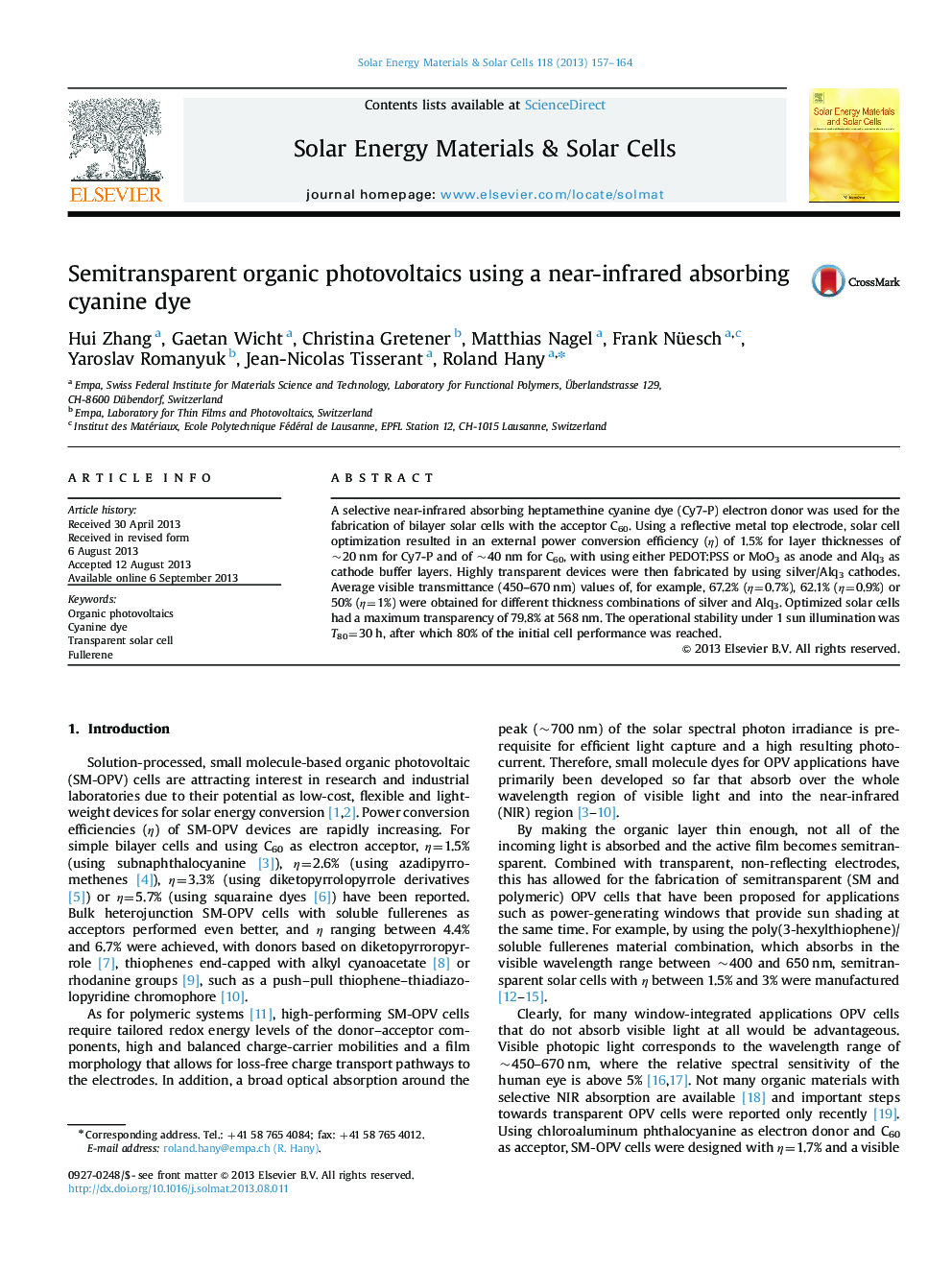| کد مقاله | کد نشریه | سال انتشار | مقاله انگلیسی | نسخه تمام متن |
|---|---|---|---|---|
| 78307 | 49327 | 2013 | 8 صفحه PDF | دانلود رایگان |

• A near-infrared absorbing cyanine dye was used as donor in organic solar cells.
• Semitransparent cyanine/C60 cells were fabricated using silver/Alq3 cathodes.
• Solar cells had a maximum transparency of 79.8% at 568 nm.
• Average visible transmittances of over 65% and a performance of 1% were demonstrated.
• The operational stability under 1 sun illumination was T80=30 h.
A selective near-infrared absorbing heptamethine cyanine dye (Cy7-P) electron donor was used for the fabrication of bilayer solar cells with the acceptor C60. Using a reflective metal top electrode, solar cell optimization resulted in an external power conversion efficiency (η) of 1.5% for layer thicknesses of ~20 nm for Cy7-P and of ~40 nm for C60, with using either PEDOT:PSS or MoO3 as anode and Alq3 as cathode buffer layers. Highly transparent devices were then fabricated by using silver/Alq3 cathodes. Average visible transmittance (450–670 nm) values of, for example, 67.2% (η=0.7%), 62.1% (η=0.9%) or 50% (η=1%) were obtained for different thickness combinations of silver and Alq3. Optimized solar cells had a maximum transparency of 79.8% at 568 nm. The operational stability under 1 sun illumination was T80=30 h, after which 80% of the initial cell performance was reached.
Figure optionsDownload as PowerPoint slide
Journal: Solar Energy Materials and Solar Cells - Volume 118, November 2013, Pages 157–164